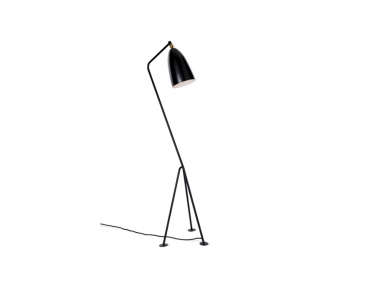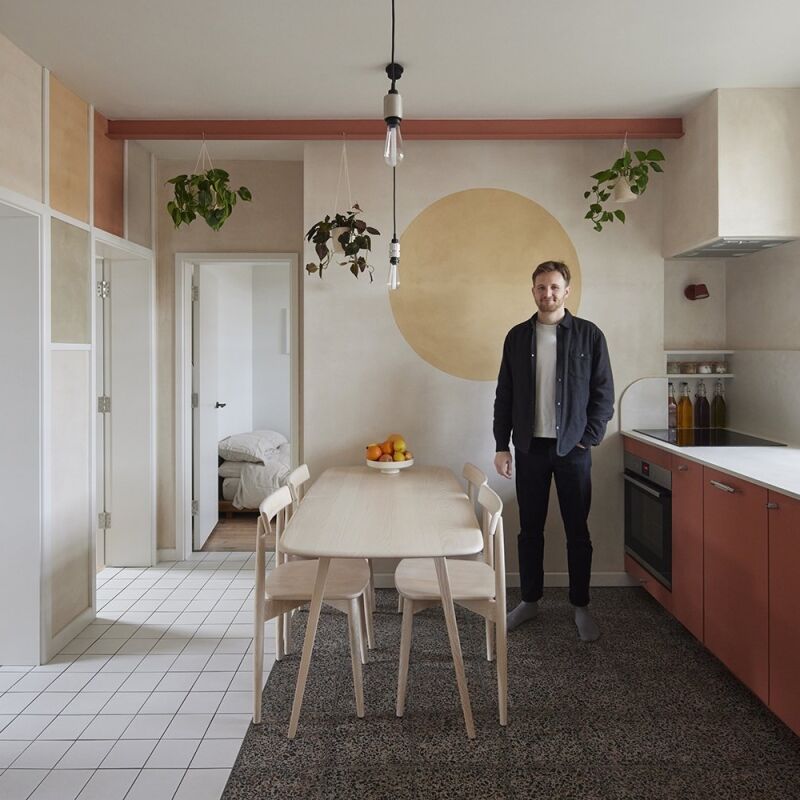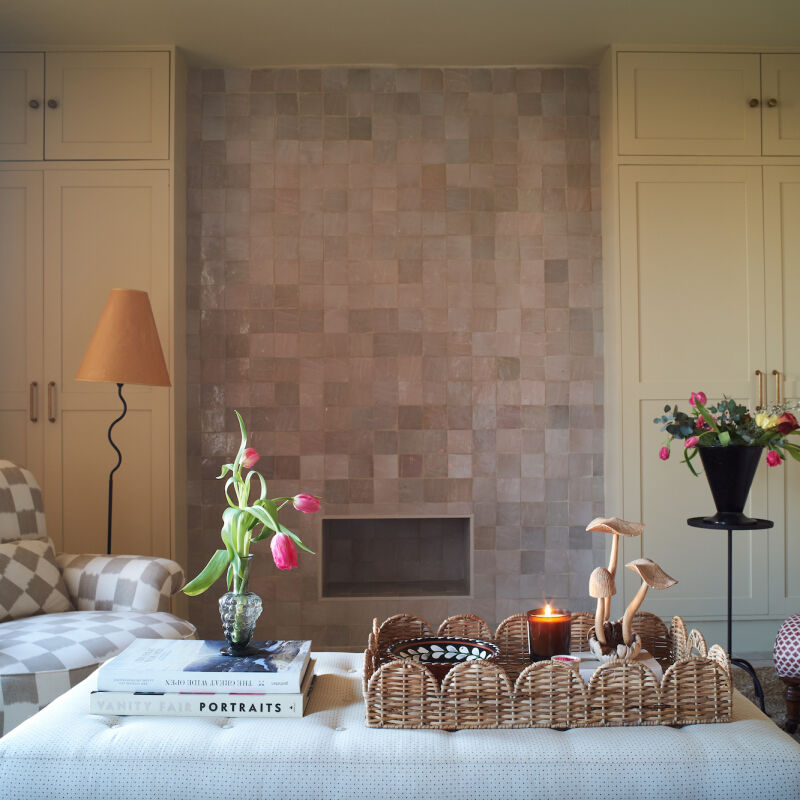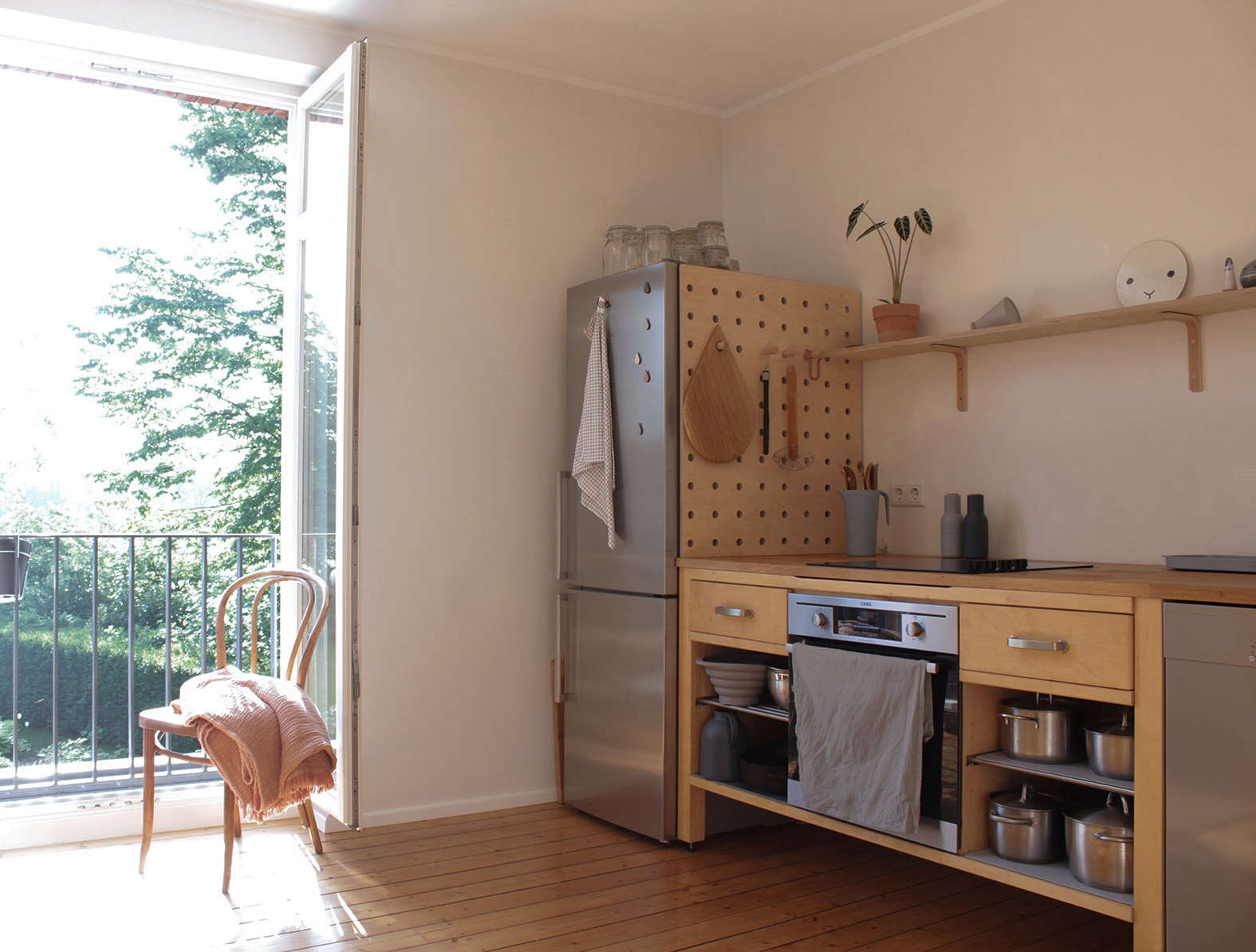Known for his masterful use of simple materials, Melbourne architect Rob Kennon says his work is about “craft and invention” built in with “elements of surprise and delight.” For a compact addition to an Art Deco house, he created a rigorously planned puzzlework of plywood bookshelf partitioning offset by concrete brickwork and flooring. The results are a domestic sanctuary: a series of discrete but integrated rooms, and there’s no lack of shelf space—or delight.
Photography by Brooke Holm via Rob Kennon Architects.
Above: Sliding glass doors in the back of the 135-square-meter (1,453-square-foot) addition open the living room to the garden.
Above: Kennon applied a materials palette of raw birch ply and polished concrete mixed with black elements throughout. The light is Greta Grossman’s Grasshopper Lamp, a midcentury classic.
Above: Open and closed shelving link the living room and kitchen/dining area. Says Kennon, “We aimed to created a sense of enclosure within the individual living environments while still maintaining visual and functional connections.”
Above: The remarkable millwork continues on the beamed ceiling. The dining area’s cement brickwork echoes the exterior walls and introduces a new raw texture to the space.
Above: Flush black cabinets are paired with a black Vola faucet (see more colors here) and butcher block counters that look like extensions of the shelving.
Above: A central square window suffuses the galley kitchen and dining area with with light, and takes the place of a painting.
Above: The fridge and pantry are concealed behind closed doors in the entry to the addition. And there’s also a glassed-in laundry area with sink. The stove wall has a backsplash of black subway tiles (scroll above for a view of it from the living room).
Above: A minimalist’s dream in a corner of the living room. The Alvar Aalto Stool, designed in 1933, is a Remodelista all-time favorite.
Above: Go to 10 Favorites: The Niche Workspace for more built-in desks.
Above: Vertically stacked subway tile and Vola fixtures in the all-white bath.
Above: Exterior shelving and a window onto the laundry area in the latticed entry. See more of Kennon’s work at RKA.
For two more Melbourne remodels to admire, go to:
- Brick Comeback: A Revived Brick Manse by Clare Cousins
- Sunny Side Up: A Studio Four Victorian Makeover






Have a Question or Comment About This Post?
Join the conversation (5)